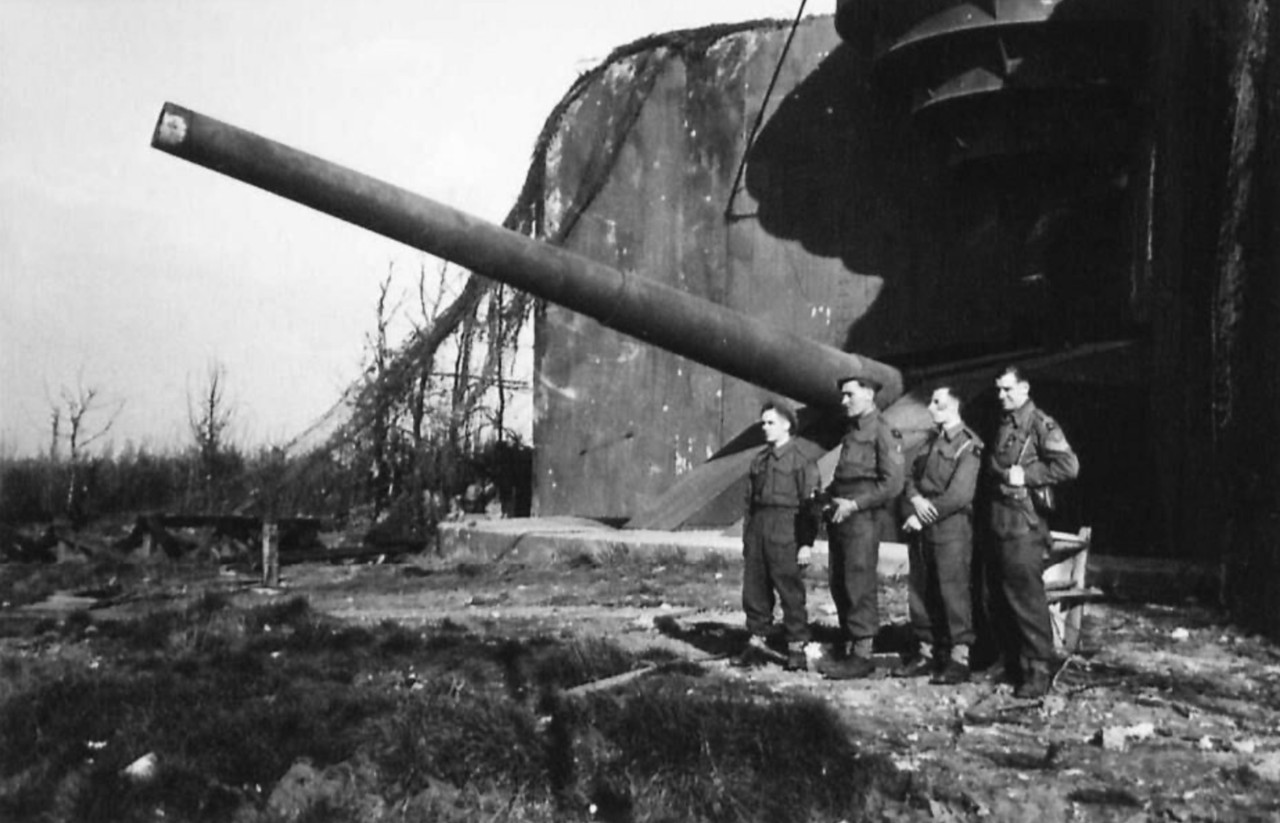Following the Nazi occupation of France, the German forces set out to defend the coastline. By August 1940, the four formidable concrete casemates had been constructed, it was originally named the ‘Seigfried battery’. The battery and its outer defences were spread out around the area of the four main casemates. These each contained one 381mm cannon which could fire up to 50km in distance. Their main purpose was to target naval craft and shipping in the Channel. The outer defences were made up of machine gun positions, ammunition storage bunkers, command posts and billets. Many of these smaller concrete structures can still be found around the site of the Todt Battery. The battery was surrounded by barbed wire and large mine fields.
When first constructed, the guns were not covered and were on open platforms, but in 1941 the casemates were constructed to offer further protection and concealment from the Allies. These were fully completed in January 1942. In February 1942, the battery was renamed from ‘Seigfried’ to ‘Todt’ in honour of the German Engineering General Fritz Todt, who had been killed in a plane crash on 8 February. Between 1938 and 1942 he had formed ‘Organisation Todt’, which saw over a million people used in forced labour roles to carry out construction projects. This resulted in tens of thousands of people suffering hard conditions and dying as a result.
Four officers, 49 non-commissioned officers and over 330 Kreigsmarine (German Navy) personnel were allocated to the battery. The duties ranged from operating the large 381mm guns, to the defence of the battery. The battery fired its first shot on 20 January 1942 and its last on 29 September 1944. On that afternoon of 29 September, the battery was captured by the North Nova Scotia Highlanders and the Highland Light Infantry of Canada, Canadian 3rd Infantry Division .
It was noted in the Highland Light Infantry war diary following the capture of the battery, ‘Now the people in Dover can relax to a certain extent, knowing that the cross channel guns are silenced.’
